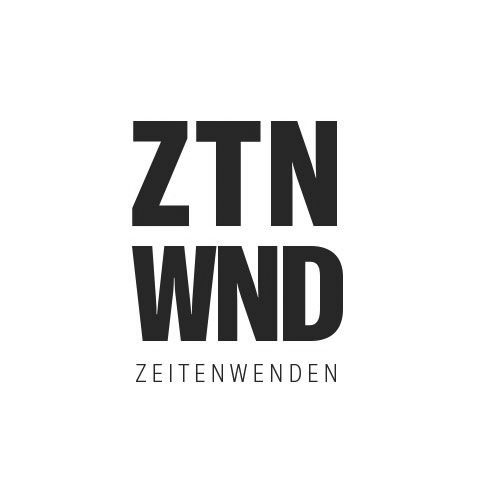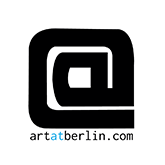The exhibition project EARTH, t. b. a. explores scenarios of post-apocalyptic life during the Berlin Gallery Weekend 2021. From 24th April to 30th May, EARTH, t.b.a. takes place physically and digitally at Haus am Lützowplatz (Studio Galerie). The project presents a series of scenarios of future life on Earth that oscillate between imagination and documentation. The selected works, which are mainly site-specific installations, are imaginary investigations of post-apocalyptic rural and urban landscapes as a result of human influence on nature and architecture. Used in the title ironically, the abbreviation ‘t. b. a’, used to signify something not yet sure that is “to be announced”, adds up to the urgency of environmental protection; An Earth whose future is not secure and which is endangered by human activity is brought to the forefront as the main point of discussion.
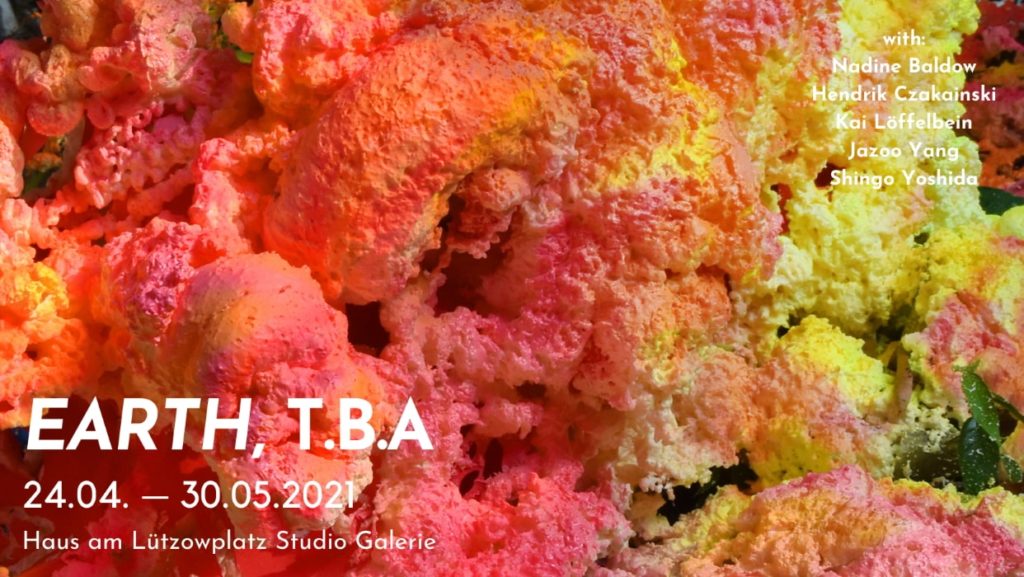
The exhibition is to be understood as part of the Anthropocene exhibition series, conceived by curator Vanessa Souli, which explores the broader relationship of humans to their immediate, as well as global, natural and social environment. An unofficial term used to describe the current period in Earth’s history when human actions have a visible impact on the regulation of climate, the Anthropocene is an increasingly important concept that encompasses all aspects of human activity on Earth. Specifically, the exhibition aims to generate a conversation around the following global issues:
• Environmental disasters and their impact on marginalised communities (climate change)
• Civilization waste of high-tech societies (e-waste)
• Cultural identity and memory in a globalised world (globalisation)
• Biological interventions in species (hybridisation)
As the main research focus of the respective artists, these questions open the dialogue through
different interpretations of the motif of landscape. More specifically, five artists will create site-specific installations made exclusively for the exhibition (with the exception of Shingo Yoshida’s video work):
PARTICIPATING ARTISTS
Nadine Baldow (Installation / Sculpture), Hendrik Czakainski (Installation / Sculpture), Kai Löffelbein (Installation / Photography), Jazoo Yang (Installation / Sculpture), Shingo Yoshida (Video / Photography) & VR FILM by Edward Burtynsky
Nadine Baldow‘s work (*1990 in Dresden, lives and works in Berlin) is primarily concerned with the complex relationship between ‘culture’ and ‘nature’ and their constant mutual influence. In an effort to answer these questions, she creates imposing installations that ask sincere questions about the future of the species and humanity. For this exhibition, she will create an immersive cell structure that seems to devour the walls around it.
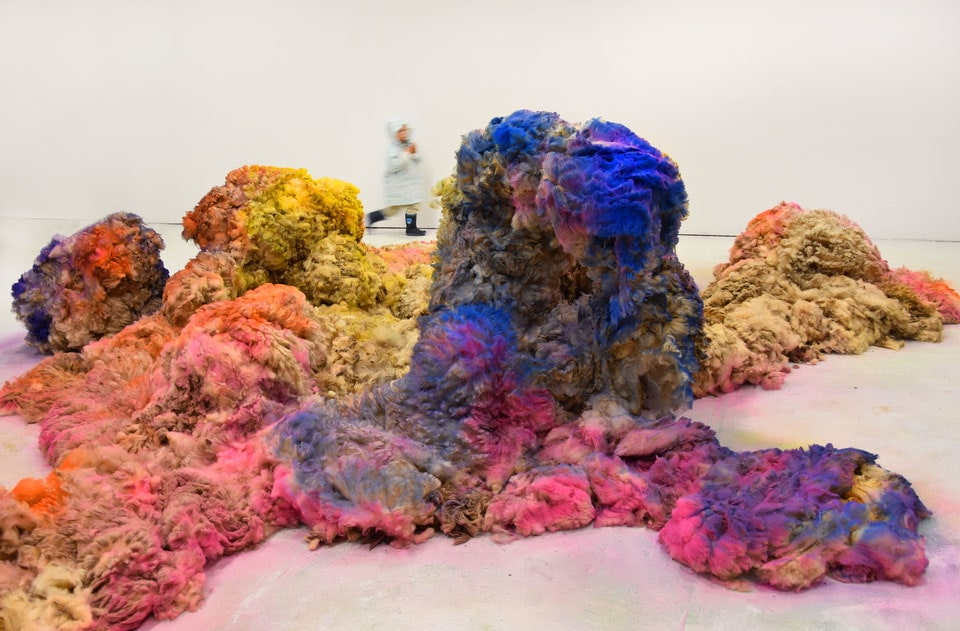
Hendrik Czakainski‘s works (*1979 in Aurich, lives and works in Berlin) are sculptural and relief-like depictions of urban settlements, and otherworldly industrial sites marked by human-inflicted and natural destruction. Czakainski’s works are often fused with impressions from his own travels (primarily Southeast Asia) and translate the often negative excesses of our globalized and increasingly urbanized world. His works are massive sculptural wall pieces, created with extreme detail and a unique artistic language. In this way, Czakainski’s works evoke an aesthetic that walks a fine line between devastation and rebirth.
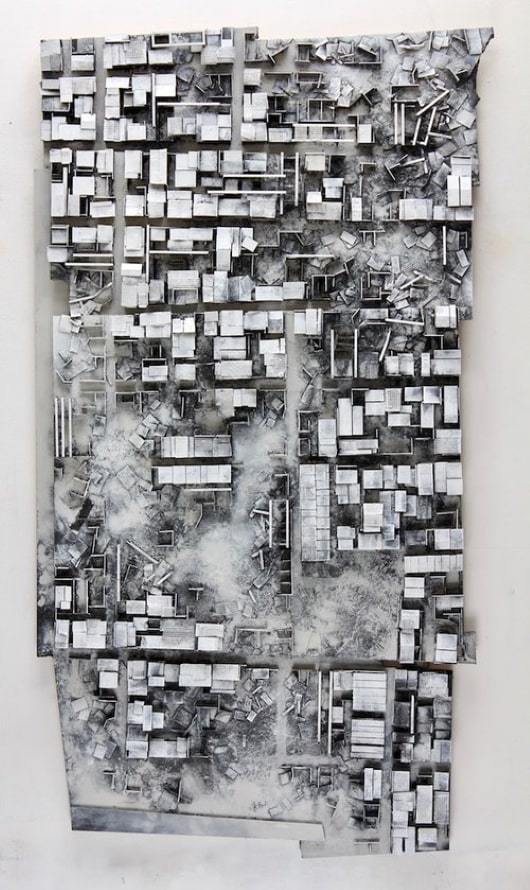
Kai Löffelbein (*1981 in Siegen, lives and works in Hanover) has worked on long-term projects in South America, Asia, Africa and Eastern Europe, in which he examines the effects of socio-political and economic actions on the population and the environment. In this exhibition, Löffelbein’s work focuses on an installation that highlights the effect of excess of e-waste of western ‘civilised’ countries on poorer, ‘developing’ nations.
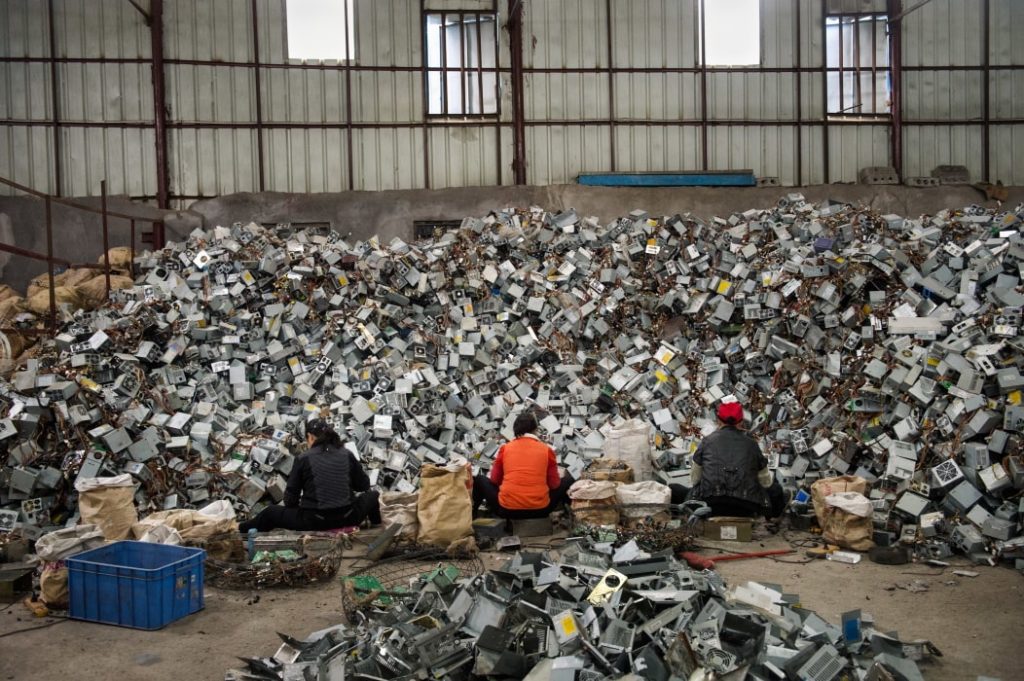
Jazoo Yang (*1979 in South Korea, lives and works in Berlin) is primarily concerned with the transformation of entire neighborhoods due to gentrification. By gathering remnants of buildings, houses and places of cultural importance, she reinterprets cultural memory and identity. This debris consists of the lost fragments of urban life – pieces of plaster from the exterior walls of a building,
scraps of wallpaper from an interior, the remains of antique tiles. By transforming these findings into sculptures, memory is retained as an artistic narrative, thus contributing to the preservation of cultural heritage.
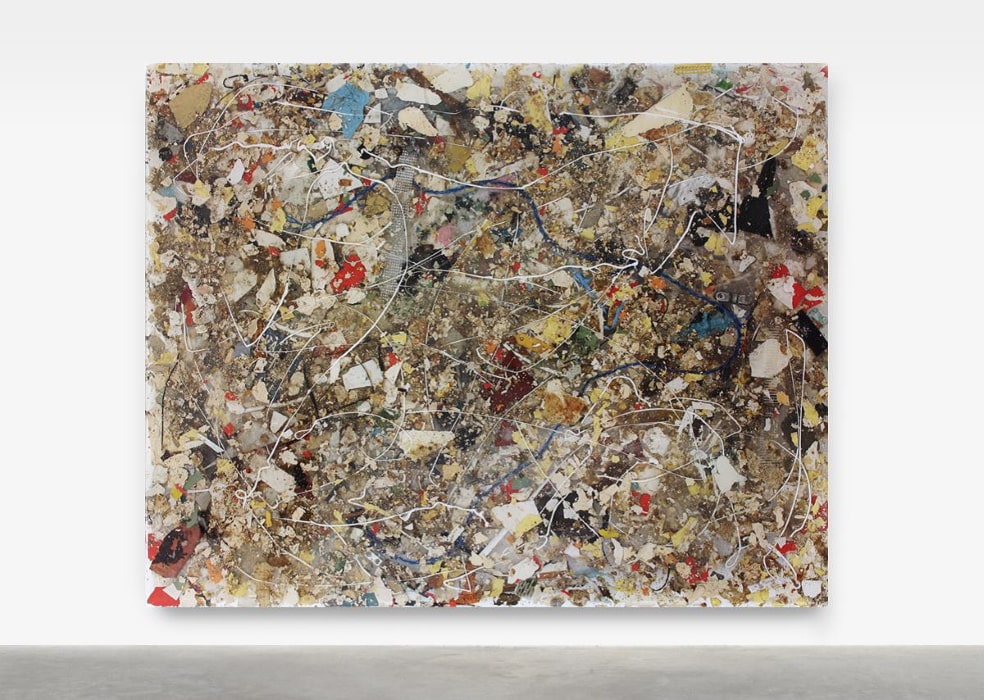
Shingo Yoshida (*1974 in Tokyo, lives and works in France and Germany) is a Japanese interdisciplinary visual artist with focus on video and installation. Yoshida has been traveling around the world for his projects since the beginning of his career. His interest lies on examining ‘micro-communities’ as a way to understand the rules of how global society works. In doing so, he discovers how humble our existence is in comparison to the omnipotence of nature. Yet, his works always evoke a connection between human and environment. For this exhibition, he presents a dystopian video installation, portraying an abandoned area of the Chilenian urban landscape.

In Edward Burtynsky’s VR Experience, visitors are invited to explore the world of the Anthropocene Project through the eyes of photographer and Anthropocene expert Edward Burtynsky. Two films, ‚DANDORA‘ (6min, 7sec) and ‚IVORY BURN‘ (6 min, 36sec), will be presented alternately in the VR glasses. The curator will be present to guide you through the process.
ANTHROPOCENE: IVORY BURN
On 31 April 2016, the largest ivory burning in history took place in Nairobi National Park. Eleven pyres containing 105 tonnes of trimmed elephant tusks and 1.35 tonnes of rhino horn were set alight to send a clear message against the ivory trade. The street value of the pyres was estimated at between $105 million and $150 million – the equivalent of between 6,000 and 7,000 elephants. The Anthropocene Project team was on the ground to capture this deeply symbolic and visceral message to the syndicates of poaching and illegal trade, and to witness the loss of animal life and the diversity it embodied.
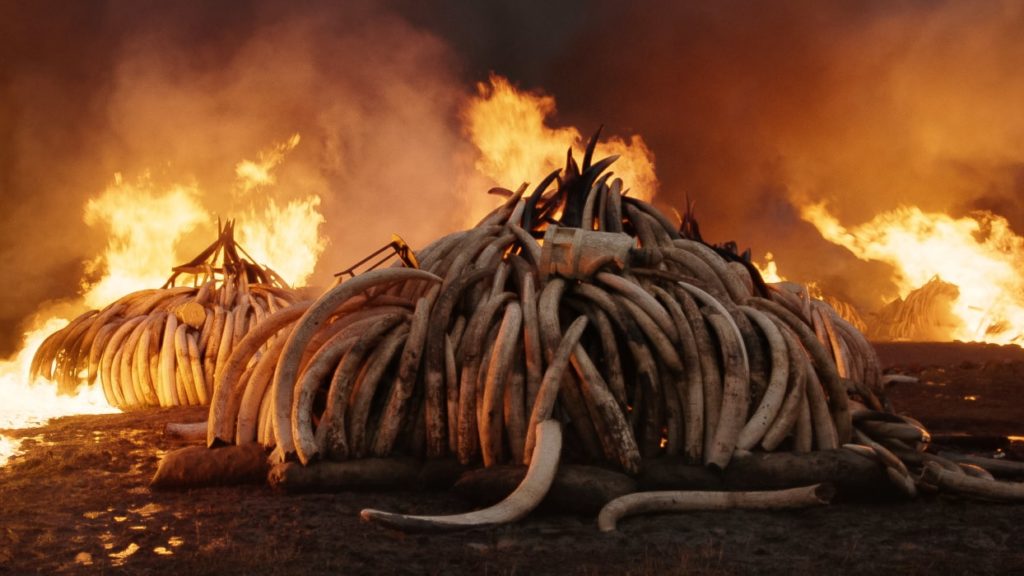
Photo courtesy of Anthropocene Films Inc. © 2018
ANTHROPOCENE: DANDORA
The Dandora Landfill is the largest of its kind in Kenya. It receives industrial, agricultural, commercial and medical waste, amounting to about 2,000 tonnes per day. It is estimated that more than one million people live near the Landfill. Residents work informally, sorting the scrap by hand and selling it to recycling plants locally. The plastic mounds and canyons of Dandora represent not only an entirely human landscape, but also an emerging micro-economy. Prolific and easy to source, plastic waste has become a resource in its own right that can be mined and sold as feedstock. But so much of it cannot be reused and will remain on the land, enter our waterways and oceans, and eventually form a significant sedimentary layer in the strata of the planet, marking the Anthropocene in geological time.
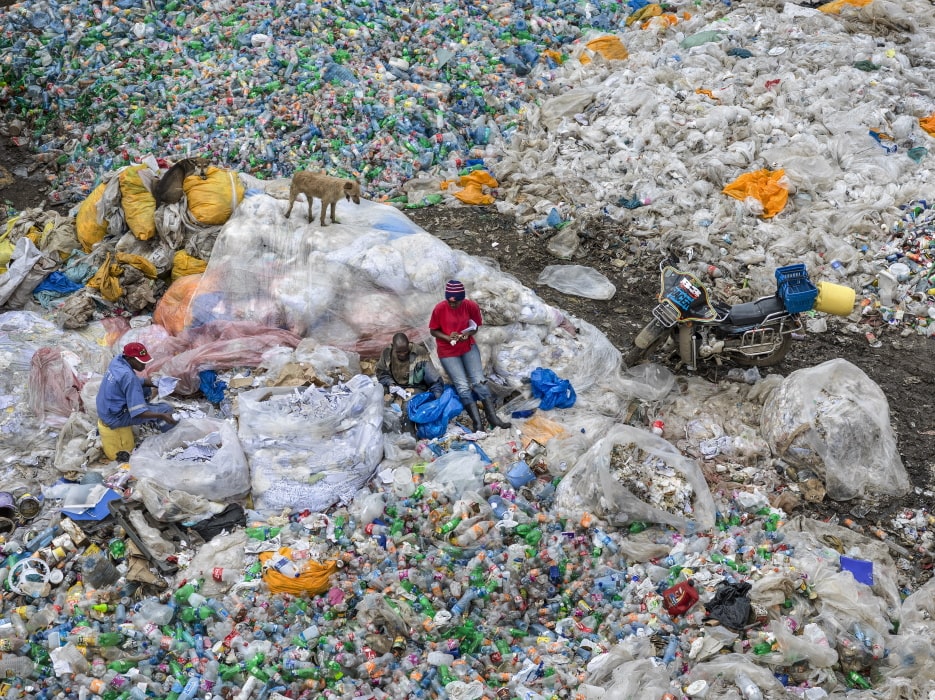
photo © Edward Burtynsky, courtesy Galerie Springer, Berlin / Nicholas Metivier Gallery, Toronto
EVENTS
In accordance with Covid-19 regulations, all events will take place online. Artist talks and curator’s tours are planned. A VR experience with Edward Burtynsky’s films is planed, if Covid-19 regulations allow for physical visits. Please visit the website for updated information.
VISIT THE GALLERY
Only one person may enter the room at a time. For information on the artworks, guided tours and dates, please contact info@vanessa-souli.com.
THE LOCATION
Haus am Lützowplatz (HaL) is an exhibition and event space under the direction of the art association „Haus am Lützowplatz – Fördererkreis Kulturzentrum Berlin e.V.“, founded in 1960. It was formed in the trying times of the cold war, a year before the wall was built in West Berlin, with the aim of reviving an existing cultural center at Lützowplatz. The founding members were
personalities from the Berlin SPD, from the worker unions and from the Berlin cultural scene. In alignment with the promotional, informational and educational aims of the association statutes, the main focus lies on the presentation of contemporary visual arts, in connection with political and societal reality.
INITIATOR & CURATOR
Vanessa Souli (*1992 in Athens, lives and works in Berlin) is an independent curator, writer and arts manager. She holds a BA in English Language and Literature and an MA in Arts Management & Curating. Since 2017 she curates exhibitions internationally and writes for established magazines. She has worked, among others for Barberini Museum, the Museum of Contemporary Art in Thessaloniki and the Athens Digital Arts Festival, among others. Her current curatorial interests include the age of the ‘Anthropocene’ and the relation of literature to art.
EARTH, t.b.a.
VERNISSAGE: 23 April, 2021 7:00 pm (per @hausamluetzowplatz)
FINISSAGE: 30 May, 2021 (with the possibility of extension)
WHERE? Haus am Lützowplatz, Studio Galerie, Lützowplatz 9, 10785 Berlin
(U1, U2, U3, U4 Nollendorfplatz, Bus M29, 100, 106, 187, N26 Lützowplatz)
WHEN? Tue-Sun, 11:00 am – 6:00 pm, Register here
SIDE PROGRAM
Curator’s Tour
15.05.2021, 4 pm – Register
28.05.2021, 7 pm – Register
Discussion Panels
30.04.2021, 6 pm – Register
‘Landscape as Method: a Means to Environmental Awareness”
With Hendrik Czakainski and Kai Löffelbein
21.05.2021, 6 pm – Register
„Landscape as Confrontation: Existential & Cultural Aspects in a Globalised
World“
With Nadine Baldow, Jazoo Yang & Shingo Yoshida
VR Experience
30.04.2021, 4 – 5.30 pm – Register per mail at info@vanessa-souli.com
21.05.2021, 4 – 5.30 pm – Register per mail at info@vanessa-souli.com
@hausamluetzowplatz & @vanessa_souli
#earthtba #hausamluetzowplatz #anthropocene #vanessasouli




